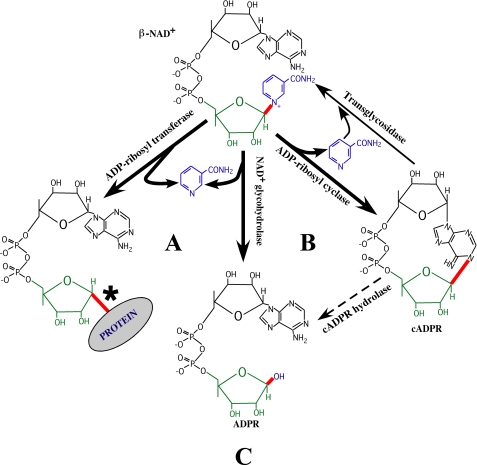FIGURE 1.
Different classes of β-NAD+ glycohydrolases. Enzymes that hydrolytically cleave the nicotinamide-ribosyl bond of β-NAD+ (shown in red) to form nicotinamide (blue) and ADPR (green and black) are known as β-NAD+ glycohydrolases and are further classified by the additional bonds (if any) whose formation they can catalyze (also shown in red). These include: A, covalent addition of ADPR to a specific substrate (mono-ADP-ribosyltransferases); B, cyclization of ADPR (ADP-ribosyl cyclases); or C, no additional reaction (strict β-NAD+ glycohydrolases). Thin lines indicate other reactions catalyzed by the ADP-ribosyl cyclases. The thin dashed line for the cADPR hydrolase reaction indicates that the cADPR is not a sequential intermediate during the hydrolytic conversion of β-NAD+ to ADPR. *, β to α inversion of the ribosyl linkage after the transfer of ADPR (21, 34).

